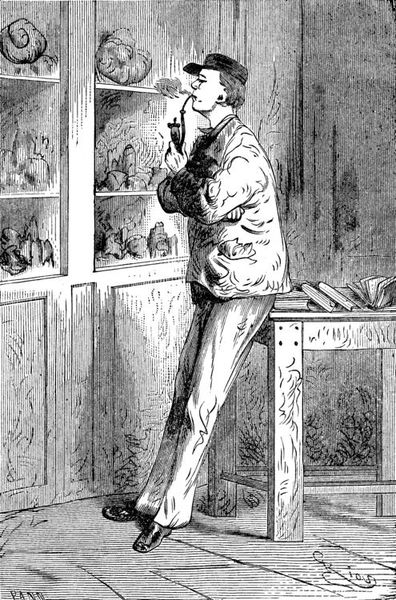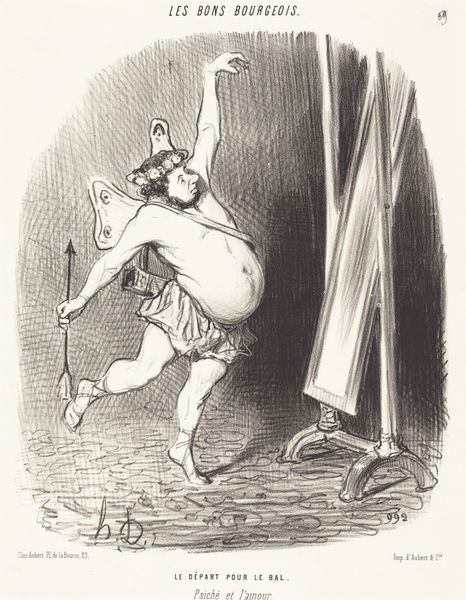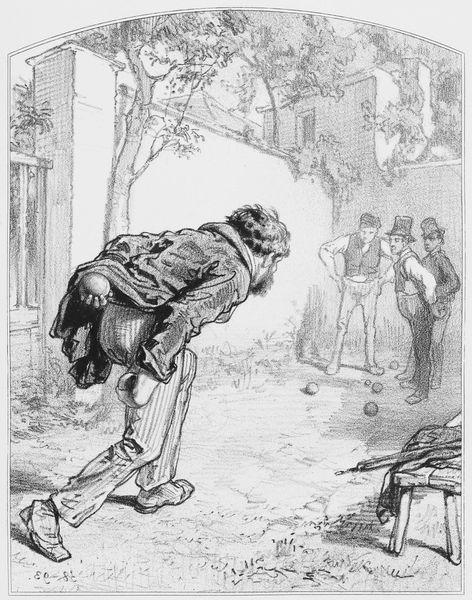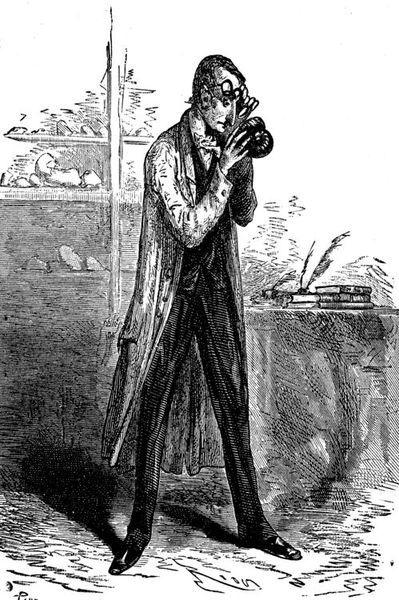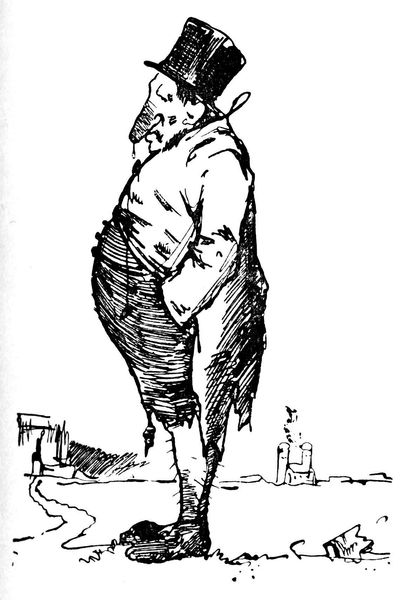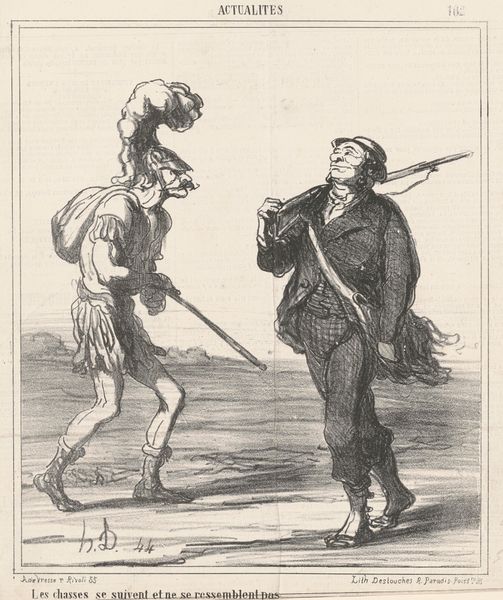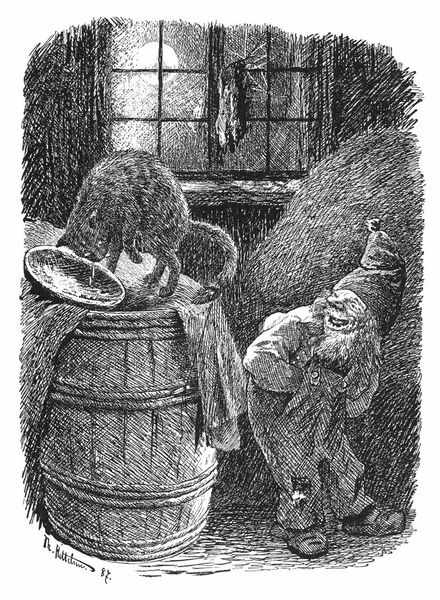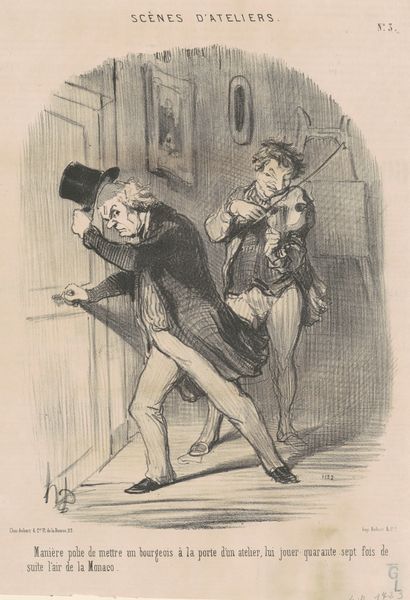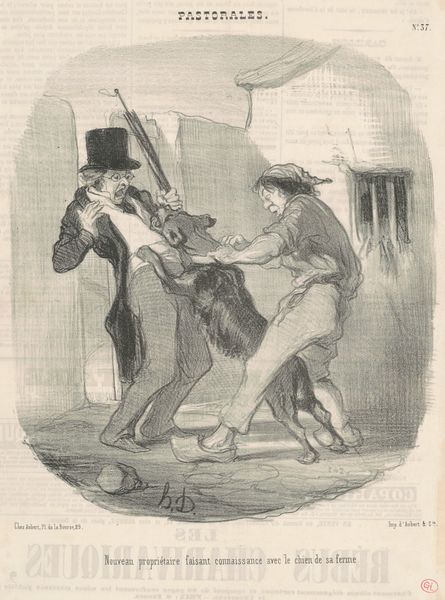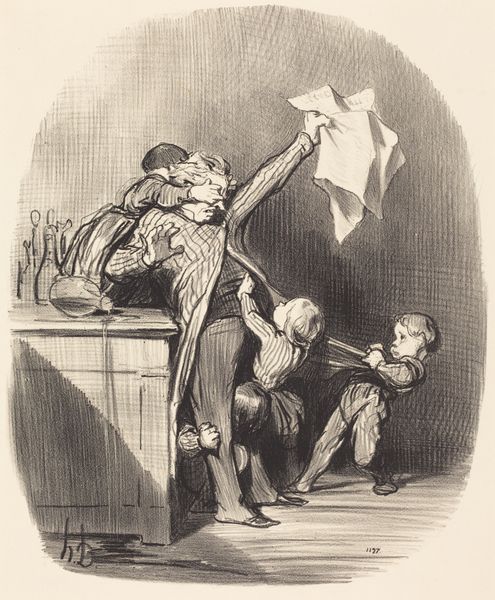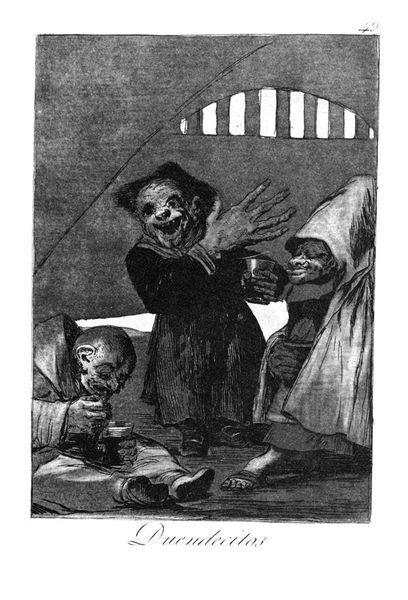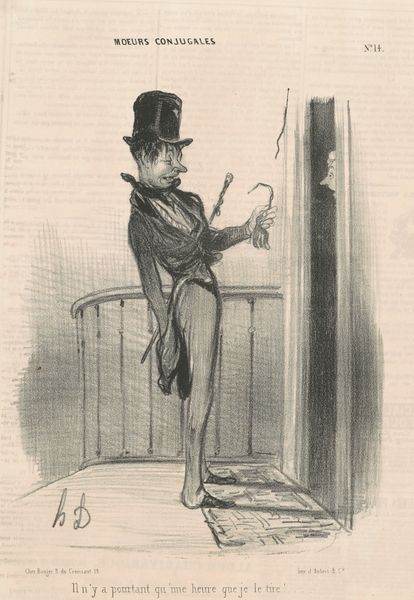
drawing, pen
#
drawing
#
medieval
#
narrative-art
#
animal
#
sketch line
#
pen illustration
#
figuration
#
romanticism
#
symbolism
#
pen
#
grotesque
Copyright: Public domain
Curator: Theodor Kittelsen’s drawing, “Du Slette Tid”, presents us with a hauntingly bizarre personification of time itself. Editor: Yes, the figure definitely leaves an immediate impression of being burdened and bizarre. The stark pen lines emphasize the textures of tattered clothes and rough appendages that add to the grim feel of this image. Curator: Indeed. Kittelsen was deeply concerned with the role of folklore and national identity in Norway, and he uses this allegorical figure to tap into anxieties about the relentless march of time and its impact on traditional ways of life. He was particularly influenced by the rise of industrialization in the 19th century. Editor: I can see how that historical context resonates with the image’s materials. Look at the hourglass attached to the figure's cloak alongside what appears to be factory chain links hanging off their… limbs? And then a modern clock right there on the figure’s back! It all underscores how industrial processes literally weighed on individuals in that period. Curator: Exactly. Kittelsen frequently used anthropomorphic figures like trolls and personifications to address pressing societal issues. The figure is hunched and weighted down by time-keeping devices. He seems almost reluctant to ring the doorbell— “AMailB Fridt” as the text says in tiny writing on the door frame —like Time himself is weary of his duty. The absurdity hints to me how art provided a unique space for commenting on issues, where direct protest wasn't possible under the status quo of the day. Editor: The entire image is constructed from a tangible, direct artistic process. The pen strokes themselves communicate the figure's exhaustion, the repetitive action mirroring the tiresome grind of labor. You can see in the bare branches used as a crutch that Kittelsen may be suggesting that the natural world can't compete with the industrialized one, implying an ultimate consumption by this figure. Curator: He also contributed heavily to children's book illustrations and political cartoons, reflecting his commitment to engaging the public through accessible art. So while on the surface it’s unsettling, this kind of work invites viewers to consider the relationship between time, labor, and cultural memory. Editor: Examining this drawing through materiality emphasizes the weight and cost associated with labor. Its stark, contrasting penwork throws our modern experience with outsourced labor in sharp relief with what must be a physical drag on the figure here in the picture. It brings up difficult questions about progress that endure today. Curator: Well put. It really does bring historical commentary alive by visual engagement, doesn't it? Editor: Absolutely. An excellent piece about reflecting on our current moment through a glimpse of a shared past!
Comments
No comments
Be the first to comment and join the conversation on the ultimate creative platform.

